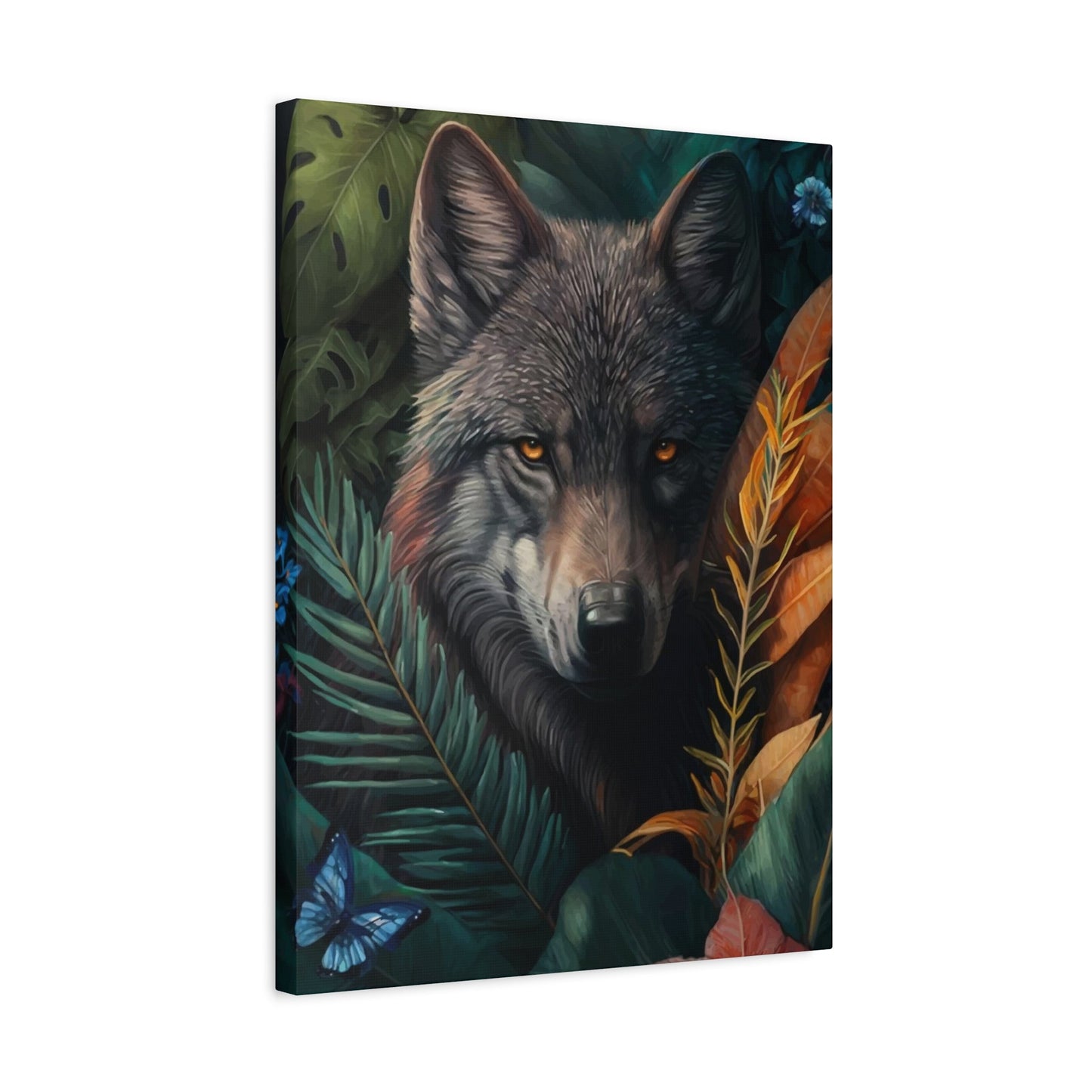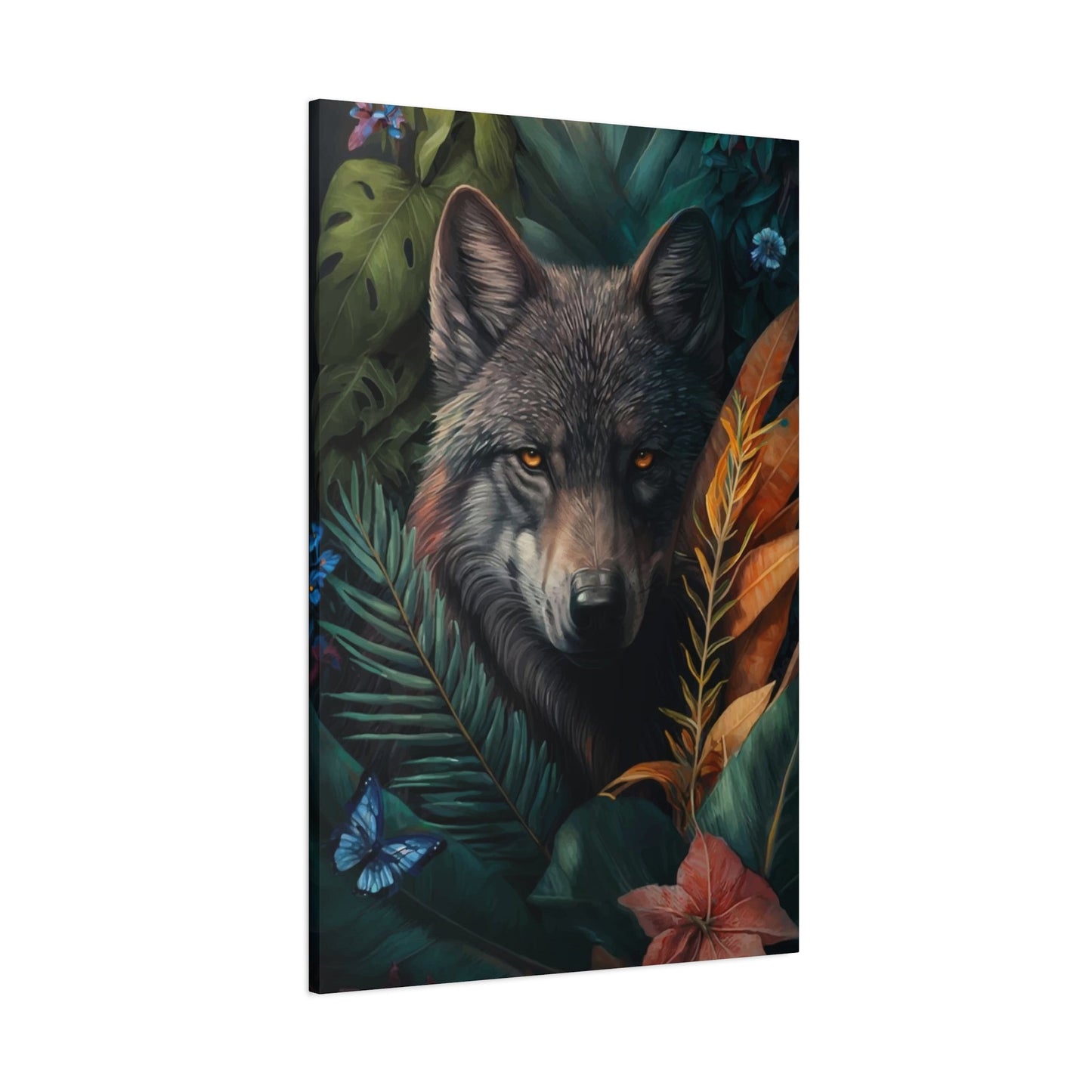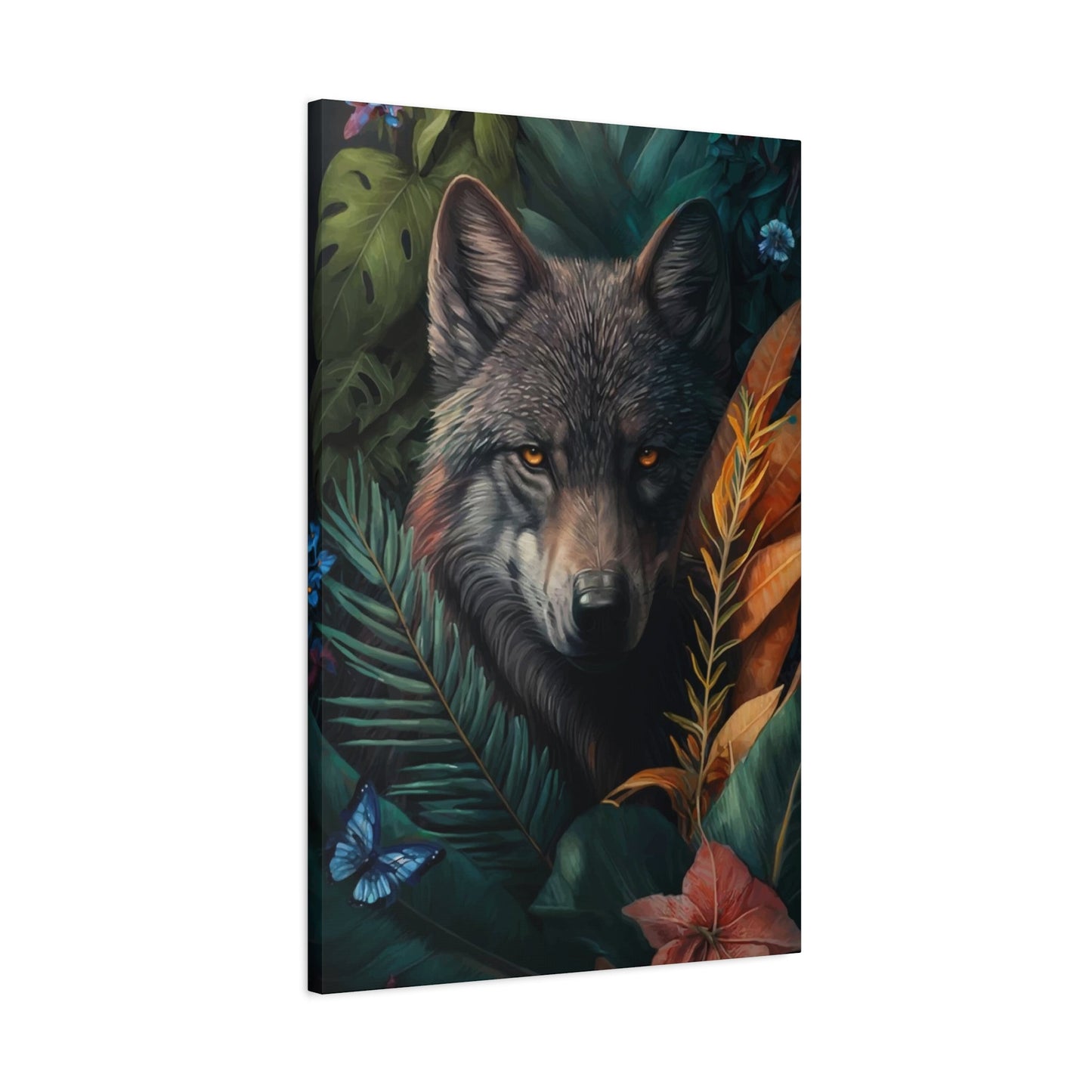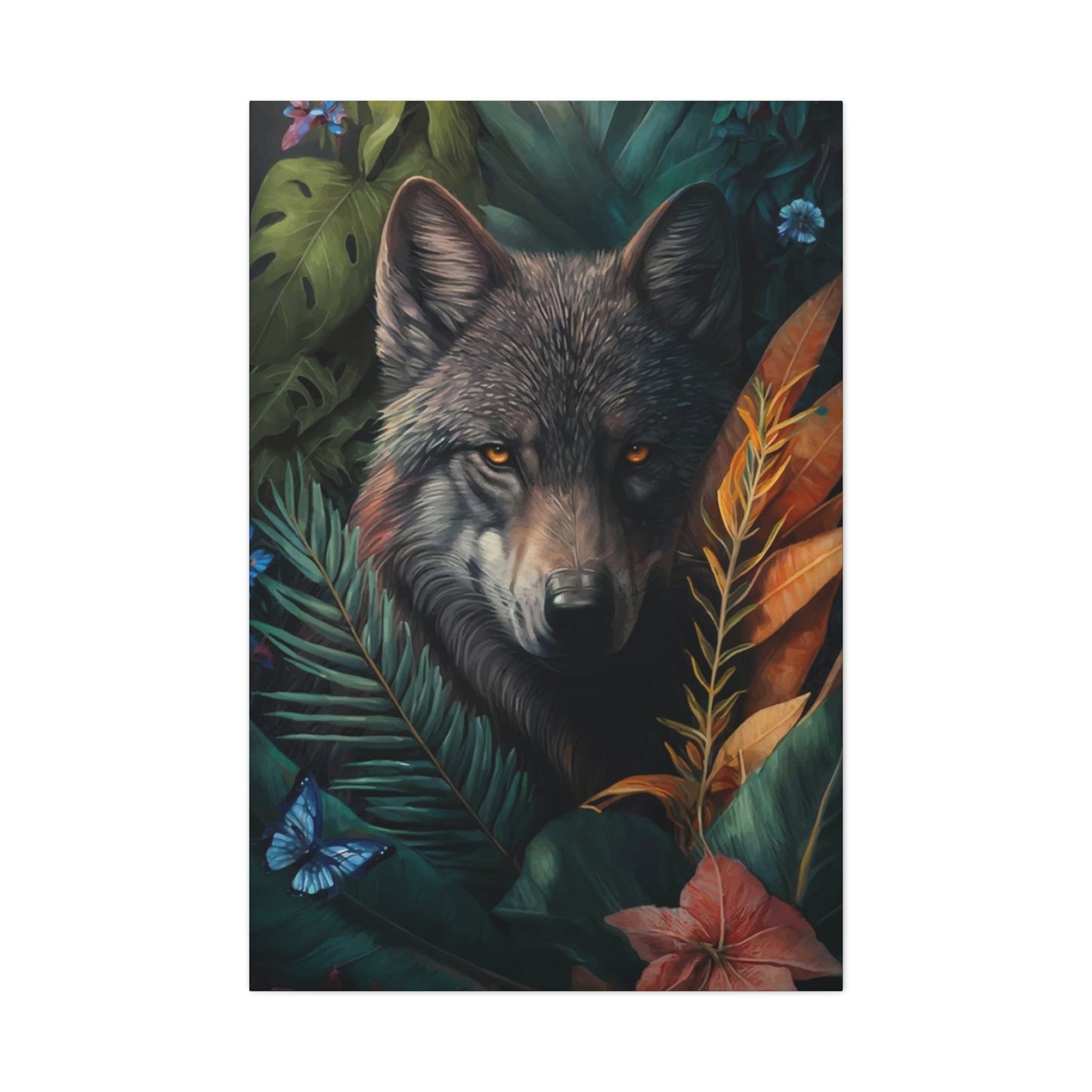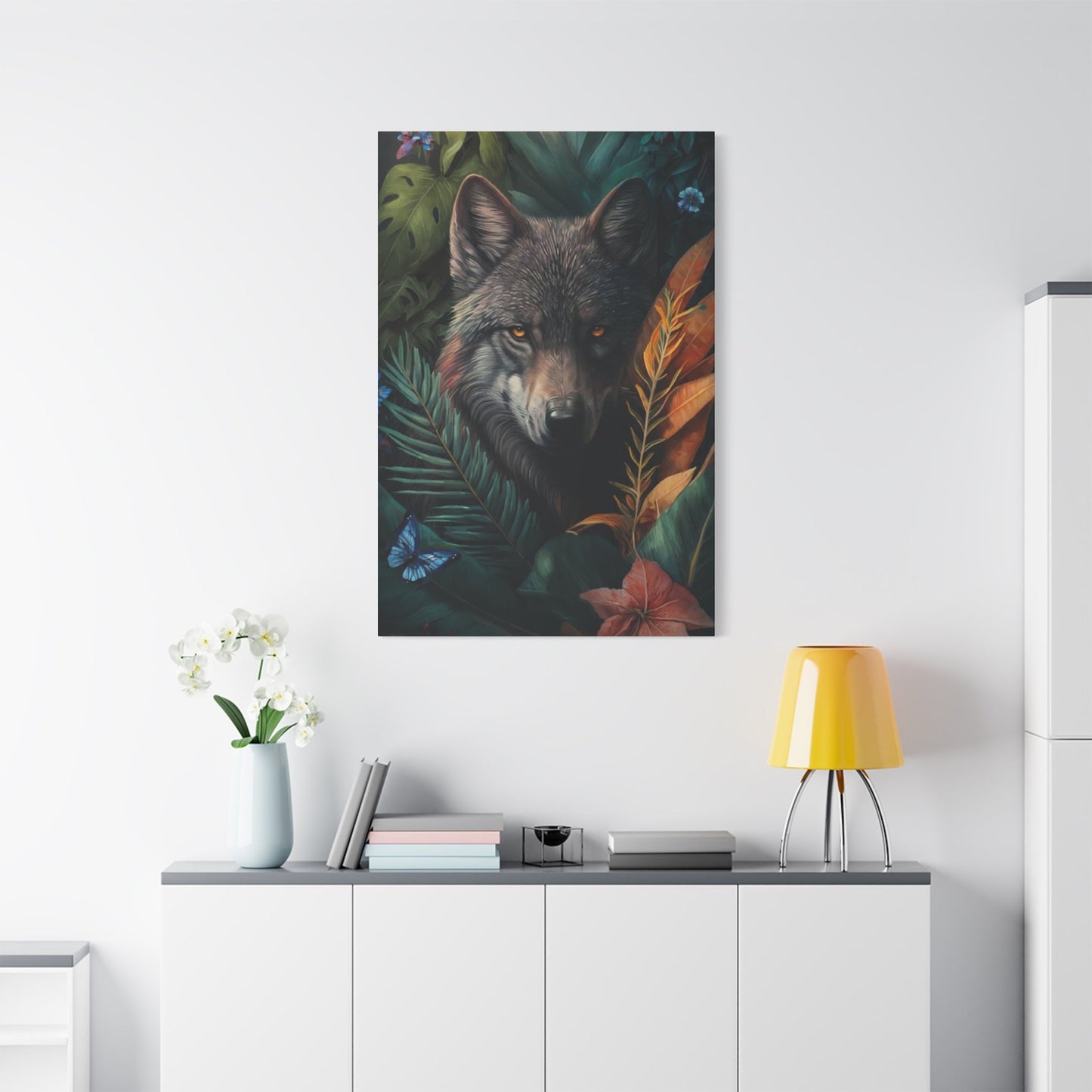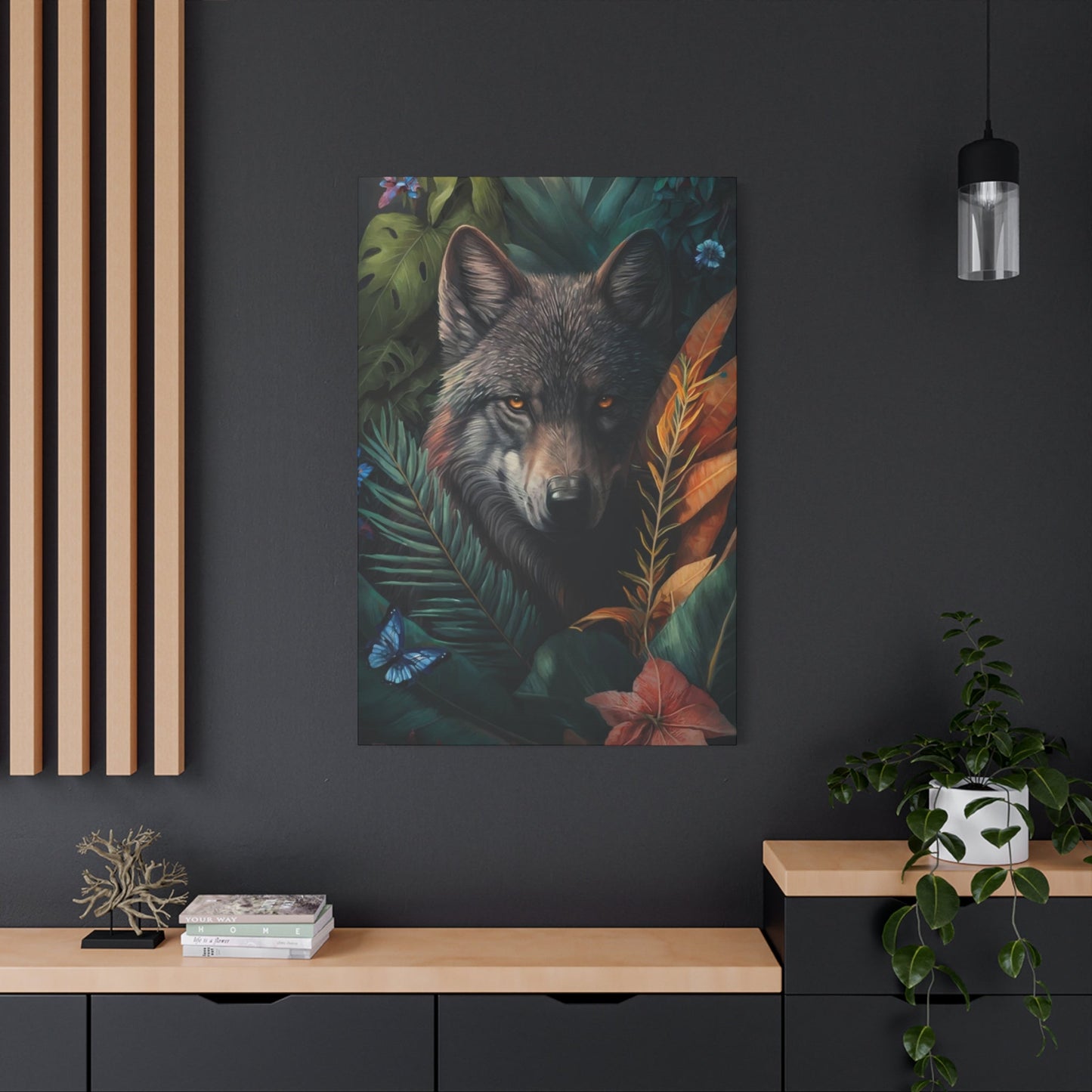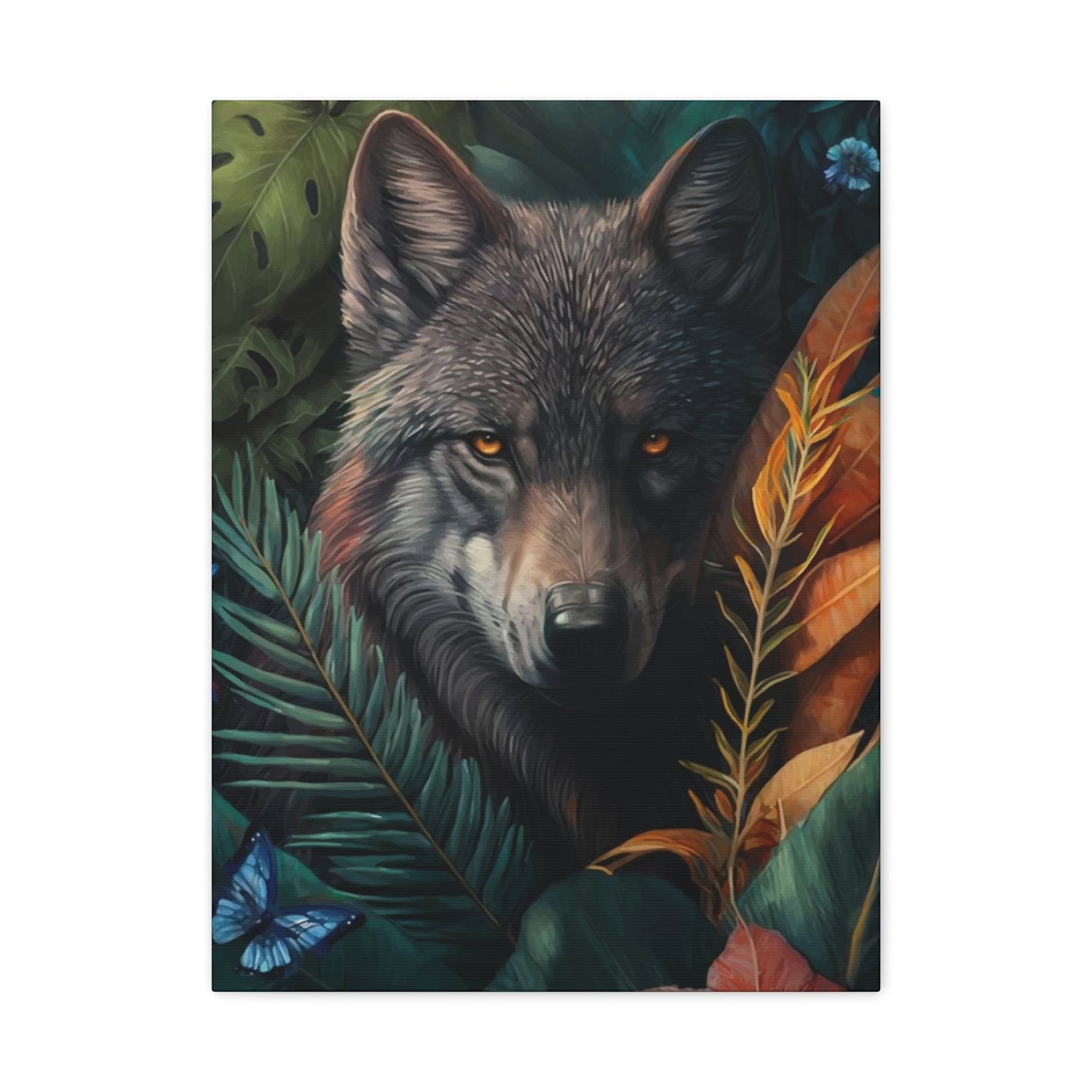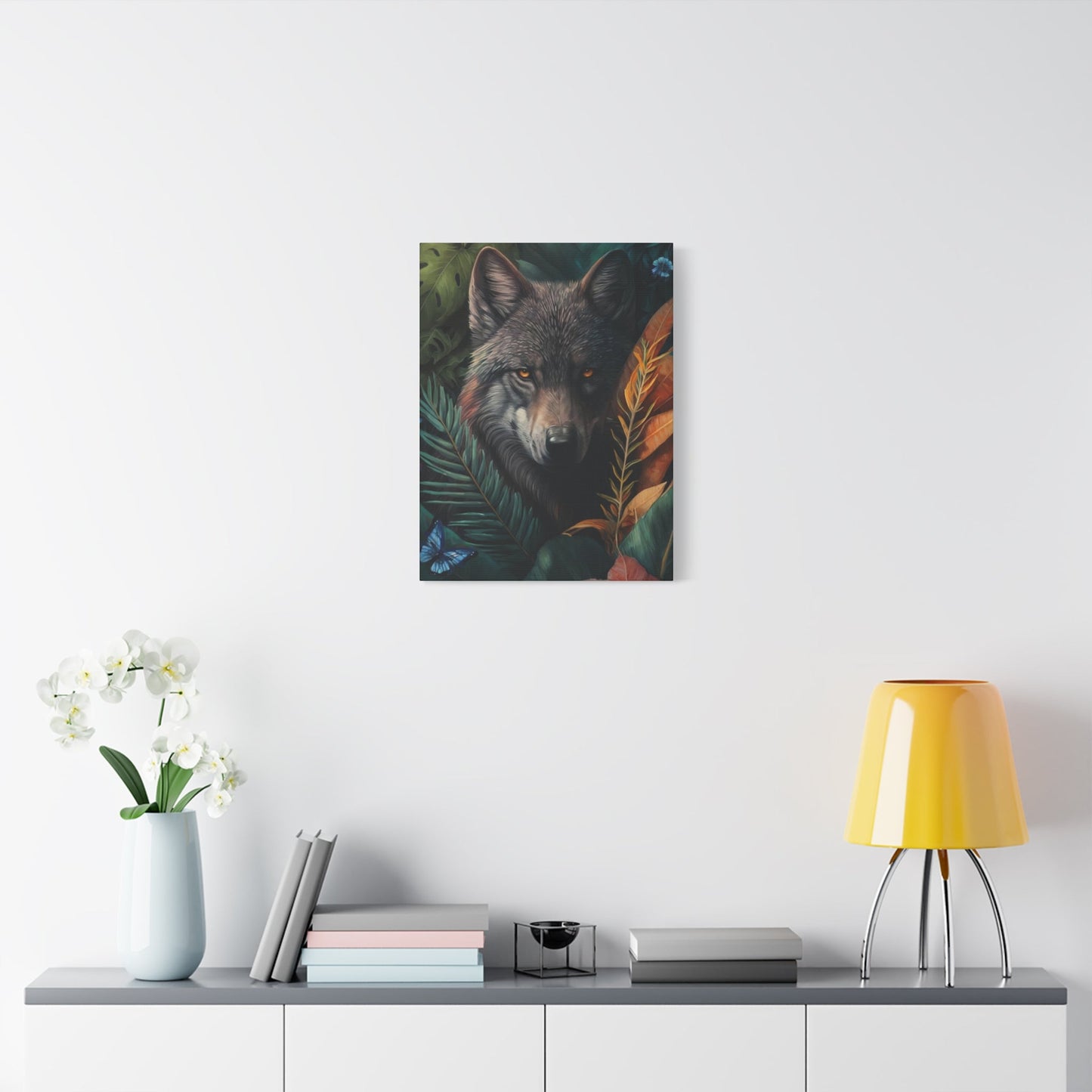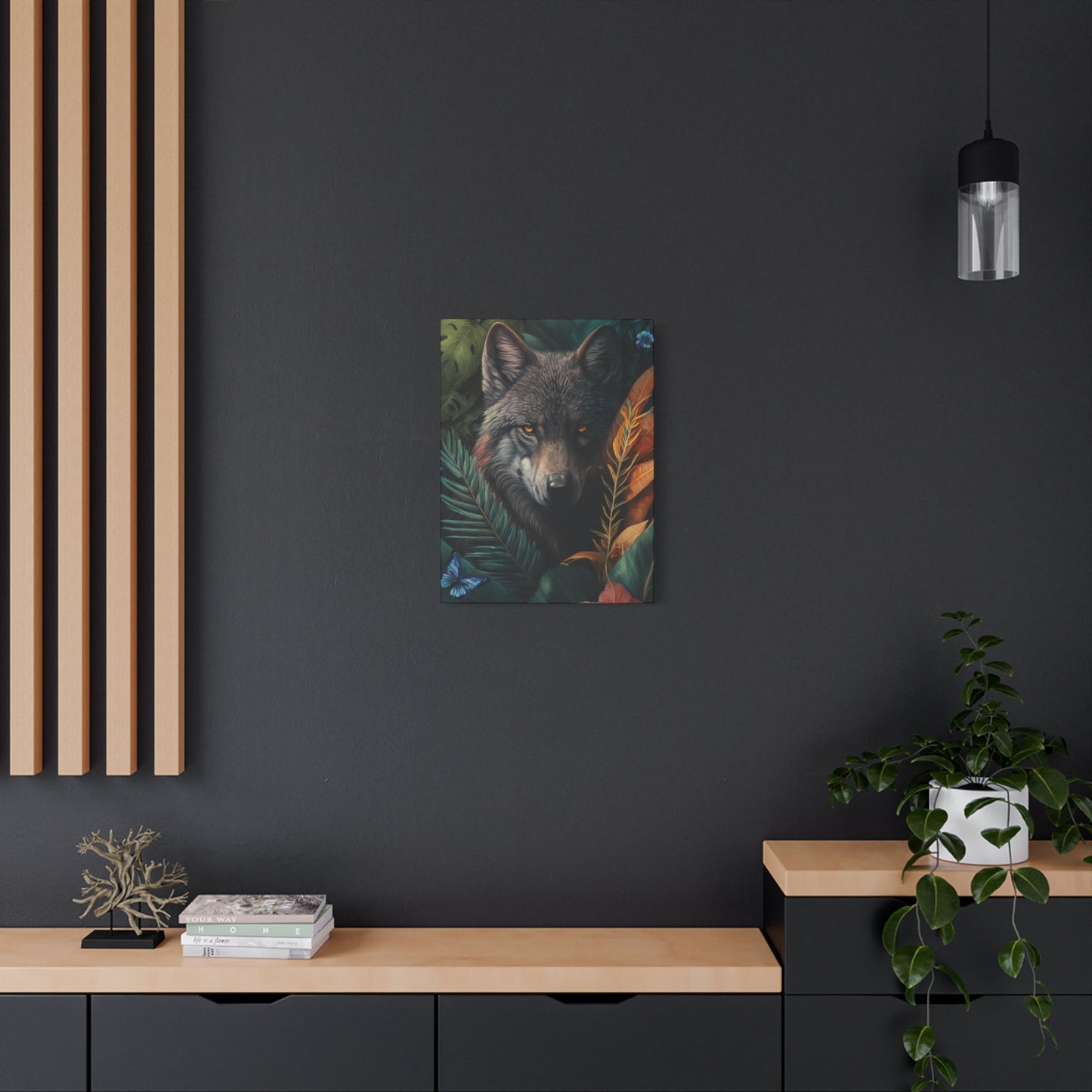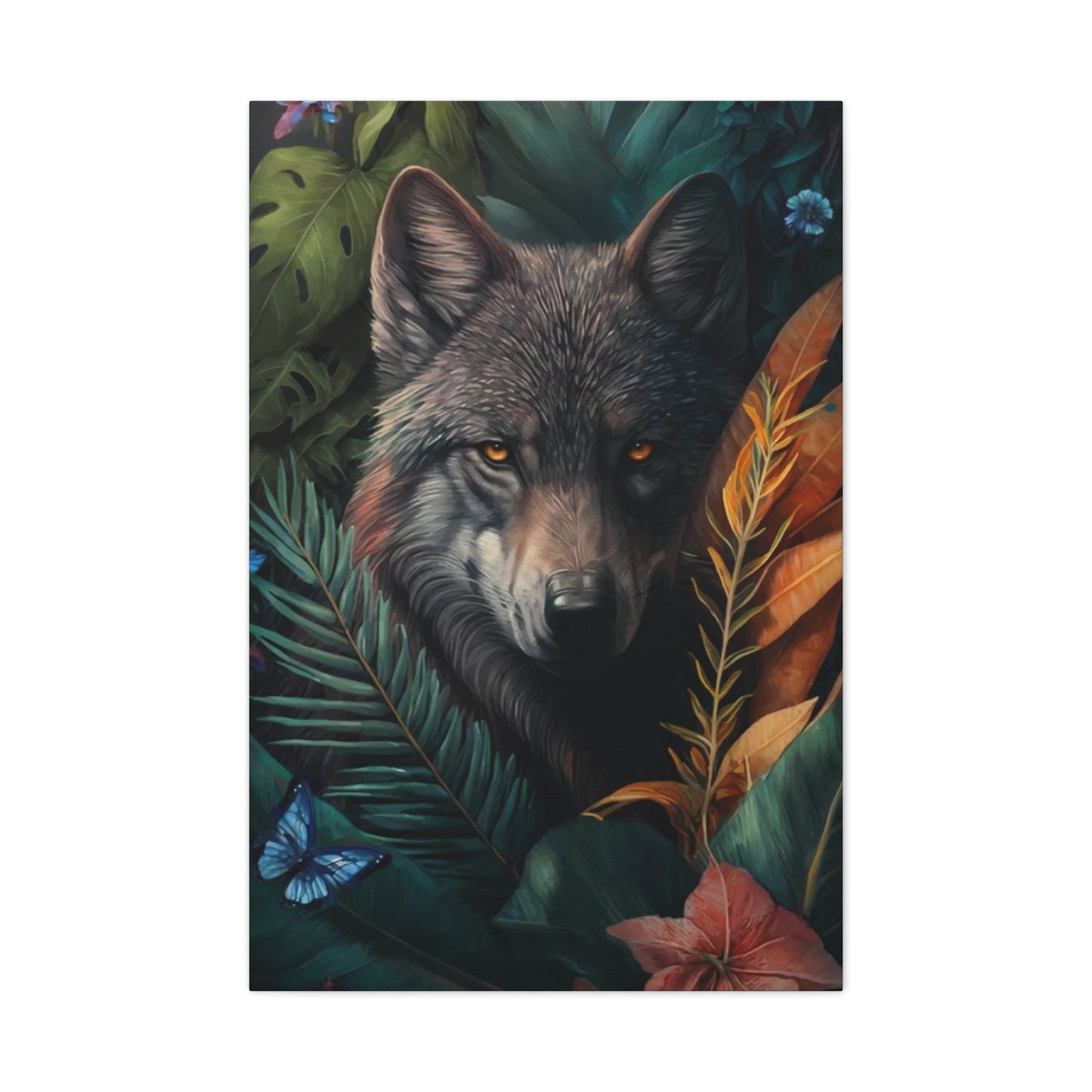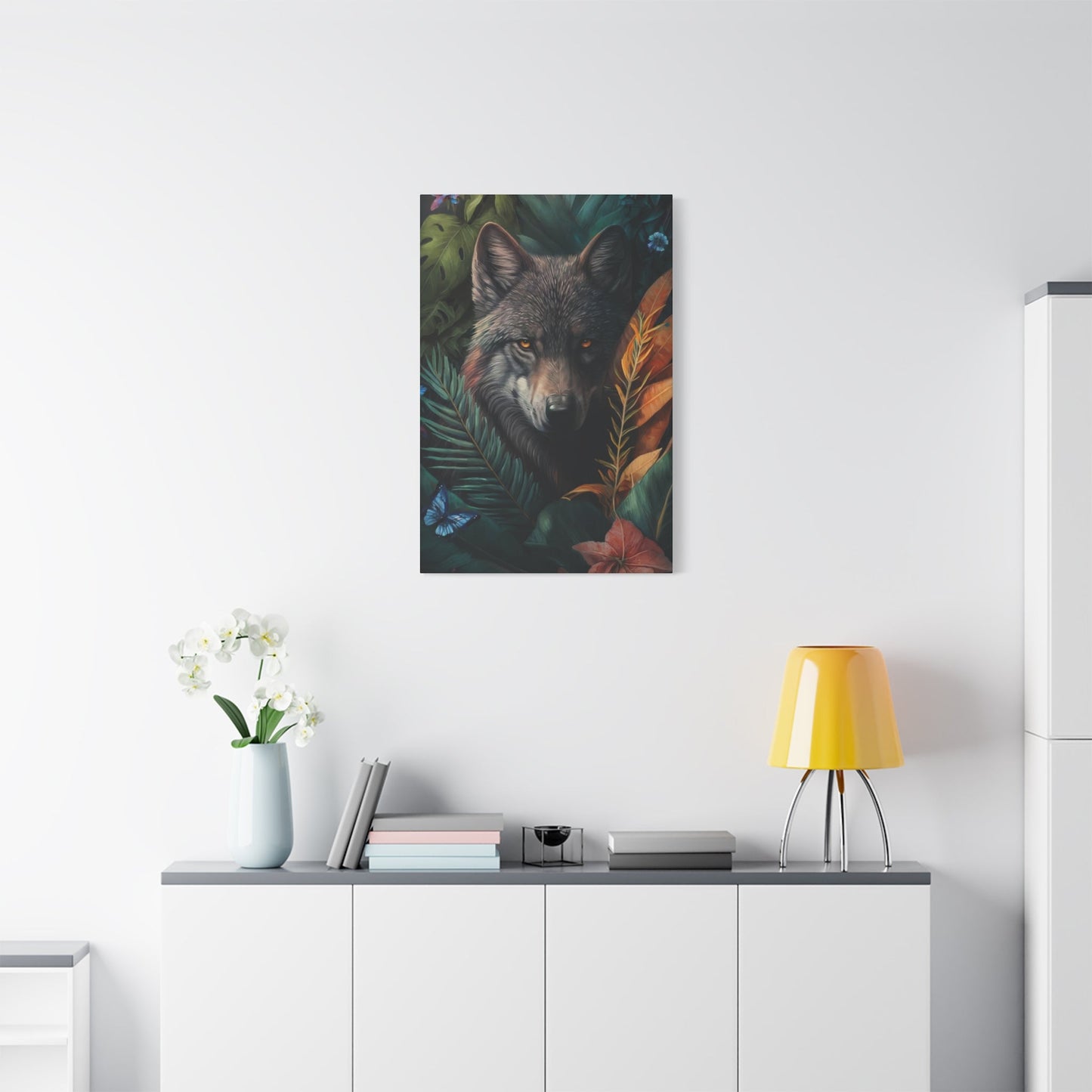Stunning Wolf Wall Art: Bold Designs and Timeless Symbolism for Every Room
Wolf imagery has captivated human imagination for centuries, representing strength, freedom, loyalty, and wild beauty. Today, incorporating lupine-themed artwork into your living environment creates a powerful visual statement that resonates with those who admire the untamed spirit of these magnificent creatures. Whether you're drawn to realistic portrayals, abstract interpretations, or symbolic representations, wolf-themed decorative pieces offer versatile options that complement various aesthetic preferences and architectural styles.
This comprehensive guide explores the multifaceted world of lupine artwork, examining everything from selecting the perfect piece for your personal sanctuary to understanding the deeper meanings behind these captivating designs. We'll journey through different artistic styles, placement strategies, cultural significance, and practical considerations that will help you make informed decisions when bringing these majestic animals into your home through art.
Powerful Visual Statements with Lupine Imagery for Your Living Areas
The commanding presence of a wolf captured in artistic form brings an undeniable energy to any room. These creatures embody raw power combined with elegant grace, making them ideal subjects for those seeking to create a bold focal point in their living quarters. The intensity in a wolf's gaze, the tension in its posture, and the primal beauty of its form translate remarkably well into various artistic mediums.
When selecting powerful lupine artwork, consider pieces that capture the animal in moments of peak intensity—mid-howl with head thrown back toward an unseen moon, stalking through dense forest with alert senses fully engaged, or standing resolute against harsh weather conditions. These dynamic portrayals communicate strength and determination, qualities that many homeowners wish to reflect in their personal environments.
Large-scale pieces work particularly well for making dramatic statements. A substantial canvas measuring four feet or more in width becomes an instant conversation starter and establishes the aesthetic tone for the entire room. The scale of such artwork commands attention without overwhelming the viewer, especially when balanced with complementary furnishings and thoughtful color coordination.
The color palette you choose significantly impacts the emotional resonance of the piece. Rich, saturated hues create warmth and vitality, while cooler tones evoke the mysterious, moonlit quality often associated with these nocturnal hunters. Deep blues and purples suggest twilight wilderness settings, while earth tones—browns, taupes, and forest greens—ground the imagery in natural authenticity.
Materials and textures add another dimension to powerful lupine displays. Canvas prints offer classic versatility and work well in traditional through contemporary settings. Metal prints provide a modern, sleek appearance with enhanced durability and vibrant color reproduction. Wood-mounted pieces bring rustic charm and organic warmth, particularly suitable for cabin-inspired or natural aesthetic environments.
Lighting plays a crucial role in maximizing the impact of dramatic wolf imagery. Strategic illumination can transform a static image into a living presence within your room. Consider installing directional spotlights or picture lights that highlight specific elements—the gleam in the animal's eye, the texture of its fur, or the atmospheric background. Dimmable lighting allows you to adjust the mood and intensity according to time of day or occasion.
The positioning of powerful lupine artwork requires thoughtful consideration of viewing angles and surrounding elements. Hanging such pieces at eye level ensures optimal visual engagement, though slightly higher placement can enhance the sense of majesty and dominance. Ensure adequate clearance from furniture edges—typically twelve to eighteen inches—to prevent the artwork from appearing cramped or poorly integrated.
Pairing powerful wolf imagery with complementary decorative elements amplifies its impact. Consider incorporating natural materials like stone, leather, wood, and fur textures in nearby furnishings and accessories. These organic elements create aesthetic continuity and reinforce the wilderness theme. However, exercise restraint to avoid thematic oversaturation; subtlety often proves more effective than heavy-handed decoration.
The psychological impact of such commanding imagery should not be underestimated. Powerful animal representations can influence mood, inspire confidence, and create a sense of connection to primal instincts and natural forces. Many people find these images energizing and motivating, making them particularly suitable for areas where you engage in creative work, strategic thinking, or physical activity.
Minimalist Approaches to Lone Lupine Imagery
The solitary wolf serves as a potent symbol of independence, self-reliance, and the quiet strength found in standing apart from the pack. Minimalist representations of lone wolves distill these qualities into their purest visual form, eliminating unnecessary elements to focus attention on essential shapes, lines, and the creature's distinctive silhouette.
Minimalist aesthetics embrace simplicity, clean lines, and deliberate negative space. When applied to lone wolf imagery, this approach creates artwork that feels modern, sophisticated, and contemplative rather than aggressive or overwhelming. The absence of complex details allows the viewer's imagination to complete the narrative, creating a more personal and intimate connection with the piece.
Line art represents one of the most popular minimalist approaches. Simple black lines on white or neutral backgrounds capture the wolf's essence through selective emphasis on defining characteristics—the pointed ears, elongated snout, alert posture, and bushy tail. These sparse representations work beautifully in contemporary settings where visual clutter is minimized and each decorative element receives individual attention.
Silhouette treatments offer another effective minimalist strategy. The wolf's recognizable profile rendered in solid black or deep charcoal gray against a contrasting background creates striking visual impact through shape alone. This approach works particularly well for smaller pieces or when incorporating multiple pieces into a gallery arrangement, as the consistent treatment unifies diverse images.
Monochromatic color schemes dominate minimalist lupine artwork. Black and white combinations provide the highest contrast and work seamlessly with nearly any color palette in surrounding furnishings and architectural elements. Variations using shades of gray add subtle depth while maintaining the restrained aesthetic. Some minimalist pieces incorporate a single accent color—perhaps a striking yellow for the eyes or a muted blue for atmospheric shadow—creating a focal point without compromising the overall simplicity.
The placement of minimalist lone wolf pieces requires attention to their relationship with surrounding empty space. These works often feature significant negative space within the composition itself, and this quality should be honored in how they're displayed. Avoid crowding such pieces with other decorative elements or placing them in visually busy areas. Instead, position them where they can be appreciated individually, with clean, uncluttered surroundings that echo the artwork's own restraint.
Framing choices for minimalist lupine imagery should emphasize simplicity and refinement. Thin metal frames in black, white, or brushed silver complement the clean aesthetic without competing for attention. Alternatively, frameless presentations with clean edges work well for pieces on rigid substrates, allowing the image to float against the background surface.
Scale considerations differ somewhat for minimalist pieces compared to more detailed or dramatic renderings. While large-scale minimalist works can certainly make powerful statements, smaller pieces often prove equally effective due to the concentrated visual impact of their simplified forms. A twelve-by-sixteen-inch minimalist lone wolf print can command as much attention as a much larger, more complex piece, particularly when given appropriate breathing room in its display location.
The psychological and emotional resonance of lone wolf minimalist imagery tends toward introspection, quiet confidence, and thoughtful independence. These pieces appeal to individuals who value solitude, self-sufficiency, and the strength found in standing apart from convention. They work particularly well in personal retreats, meditation areas, reading nooks, or private offices where contemplative energy supports the room's function.
Combining multiple minimalist lone wolf pieces into a cohesive display creates visual interest through repetition with variation. Consider a series of three to five pieces featuring the same wolf in different poses or from various angles, all rendered in consistent minimalist style. Arrange them in a horizontal line, vertical column, or asymmetric cluster to create a custom installation that feels intentional and curated.
Bringing Wilderness Charm to Rustic Cabin Environments with Lupine Themes
Rustic cabins and wilderness-inspired living environments provide the perfect backdrop for wolf-themed artwork. The natural affinity between these majestic predators and the untamed forests they inhabit creates seamless thematic harmony. Incorporating lupine imagery into such settings reinforces the connection to nature and wilderness that defines the rustic aesthetic.
The rustic design philosophy emphasizes natural materials, earthy color palettes, and an overall sense of organic warmth. Wood dominates as the primary structural and decorative material, often in its natural state with visible grain, knots, and weathered characteristics. Stone, leather, and textiles in natural fibers complement the wood, creating layered textures that evoke the outdoors. Wolf artwork in these environments should harmonize with rather than compete against these strong natural elements.
Wood-mounted lupine photographs and prints integrate particularly well in cabin settings. The warm tones of wood substrates—cedar, pine, or reclaimed barnwood—complement the natural environment portrayed in the imagery itself. Pieces mounted on rough-hewn or weathered wood planks enhance the rustic character, appearing as though they've aged naturally within the cabin over many years. This technique works especially well for images featuring wolves in forested settings, creating visual continuity between frame and subject.
Color palettes for rustic cabin wolf artwork should draw from the natural world. Earth tones predominate—rich browns, deep greens, warm taupes, and golden amber hues that echo autumn forests. These colors complement typical cabin color schemes while maintaining visual interest. Seasonal variations offer opportunities for rotating displays; cooler blues and whites for winter scenes featuring wolves in snowy landscapes, while warmer tones suit summer and autumn imagery.
Scale and proportion take on special significance in cabin environments, where architectural features like exposed beams, stone fireplaces, and vaulted ceilings create strong visual anchors. Large-scale lupine artwork can hold its own against these substantial elements, preventing the pieces from appearing diminished or insignificant. Consider oversized canvases or multi-panel installations for placement above fireplaces, on prominent feature boundaries, or in open floor plans where greater visual impact is needed.
The narrative quality of wolf imagery enhances its suitability for rustic settings. Unlike abstract or purely decorative pieces, lupine artwork tells stories—of survival, hunting, pack dynamics, and adaptation to harsh conditions. These narratives resonate with the cabin lifestyle and the values associated with wilderness living. Choose pieces that capture meaningful moments: a mother with pups, a pack traversing a winter landscape, or a lone animal surveying its territory from a rocky outcrop.
Placement considerations in cabin environments often revolve around gathering areas where family and guests congregate. Above the fireplace represents traditional positioning that honors the hearth as the cabin's spiritual center. Dining areas benefit from wolf pack imagery that symbolizes family unity and social bonds. Bedroom spaces might feature more solitary or restful lupine images—perhaps an animal at rest or silhouetted against a twilight sky.
Incorporating three-dimensional elements alongside two-dimensional artwork creates visual depth and enhanced thematic development. Consider combining lupine paintings or photographs with carved wooden wolf sculptures, metal silhouettes mounted on walls, or textile pieces like woven tapestries featuring wolf motifs. These varied artistic expressions create a richer, more immersive aesthetic experience.
Lighting in cabin environments typically tends toward warm, subdued illumination that enhances the cozy atmosphere. This lighting quality affects how wolf artwork appears and should be considered during selection. Images with strong contrast and clear composition work best in lower light conditions. Avoid pieces that rely on subtle color gradations or fine details that might be lost in the dimmer illumination typical of rustic settings.
Authenticity proves crucial when curating wolf artwork for cabin environments. The pieces should feel genuine rather than kitsch or overly commercialized. Seek out works by artists who demonstrate real understanding of and respect for these animals, capturing their true nature rather than romanticized or cartoonish versions. High-quality photography from wildlife photographers who've observed wolves in their natural habitats provides authentic representations that honor both the animals and the wilderness aesthetic.
Seasonal rotation of wolf artwork allows you to respond to changing conditions outside your cabin windows. Winter scenes featuring wolves in snow-covered landscapes resonate during cold months, while images of wolves in lush summer forests suit warmer seasons. This practice keeps your decorative scheme fresh and maintains strong connections between indoor and outdoor environments.
Cultural and Tribal-Inspired Lupine Decorative Hangings
Throughout human history, wolves have held profound spiritual and cultural significance for indigenous peoples worldwide, particularly among Native American tribes of North America. These communities developed rich symbolic traditions around wolves, viewing them as teachers, guides, and sacred beings worthy of respect and reverence. Contemporary wolf artwork drawing from these tribal traditions offers a way to honor these cultural perspectives while creating visually striking decorative elements.
Tribal-style wolf imagery typically features distinctive visual characteristics that set it apart from realistic or naturalistic representations. Bold, simplified forms emphasize symbolic meaning over anatomical accuracy. Geometric patterns, stylized features, and traditional color palettes drawn from natural pigments create a unique aesthetic that connects contemporary living areas with ancient artistic traditions.
Understanding and respecting the cultural origins of tribal wolf imagery is essential. These designs emerge from specific cultural contexts with deep spiritual meanings that extend far beyond mere decoration. When incorporating such pieces into your home, approach them with awareness and appreciation for their cultural significance. Seek out authentic works created by indigenous artists or pieces that respectfully draw inspiration from tribal traditions without appropriating sacred symbols.
Color symbolism plays an important role in tribal-style wolf imagery. Different cultures assign specific meanings to particular colors, and these associations influence how the artwork communicates its message. Earth tones often represent grounding and connection to the land. Blues and greens might symbolize water, growth, and renewal. Reds can indicate life force, passion, or protection. Understanding these color associations adds depth to your appreciation of the artwork and informs your selection process.
Traditional tribal wolf designs often incorporate additional symbolic elements beyond the animal itself. Geometric patterns surrounding the wolf might represent mountains, water, sky, or spiritual concepts like the four directions or sacred circles. Feathers, tracks, or other animal symbols may appear alongside the wolf, creating complex narratives within single pieces. These layered meanings make tribal-style pieces particularly rich subjects for contemplation and conversation.
Materials and construction methods authentic to tribal traditions create distinctive aesthetic qualities. While many contemporary pieces are printed on modern materials, some artists work in traditional media like hide, bark, woven textiles, or carved wood. These authentic materials bring tactile richness and cultural authenticity to the artwork, though they may require special care and handling to preserve them properly.
Placement of tribal-style wolf hangings should honor the significance of the imagery while integrating it thoughtfully into your living environment. These pieces often work well as focal points in gathering areas where their symbolic meanings can be shared and discussed. Consider positioning them in locations where natural light enhances their colors and details without causing fading damage, as many traditional pigments are more light-sensitive than modern inks.
Complementary decorative elements can reinforce the cultural aesthetic when incorporating tribal wolf designs. Natural materials like leather, wood, stone, and woven textiles create appropriate context. However, avoid creating theme-park-like environments that reduce rich cultural traditions to shallow decoration. Restraint and thoughtfulness serve better than heavy-handed thematic execution.
Supporting indigenous artists who create contemporary tribal-style wolf artwork provides economic benefits to native communities while ensuring cultural authenticity and appropriateness. Many native artists work in both traditional and contemporary styles, creating pieces that honor ancestral artistic traditions while speaking to modern aesthetic sensibilities. Purchasing directly from these artists or through galleries representing them ensures authenticity and fair compensation.
Educational components can enhance your display of tribal wolf artwork. Small plaques or cards explaining the cultural significance of the imagery, the tribal traditions it draws from, or information about the artist add context that deepens appreciation. This approach transforms decorative elements into educational opportunities, particularly valuable when children visit your home.
The spiritual dimensions of tribal wolf imagery extend beyond visual aesthetics. For many indigenous traditions, wolves serve as spirit guides, teachers of cooperation and loyalty, and symbols of intuition and intelligence. Displaying artwork that honors these spiritual perspectives can serve as a reminder of these qualities and inspire reflection on how they manifest in your own life.
Caring for tribal-style wolf hangings requires attention to materials and construction. Textile pieces may need protection from direct sunlight to prevent fading and fiber degradation. Hide or bark pieces benefit from stable humidity levels to prevent cracking or warping. Regular gentle cleaning without harsh chemicals preserves the integrity of natural materials and traditional pigments. Consulting with the artist or seller about proper care ensures your pieces remain beautiful for years.
Monochromatic Lupine Photography for Dramatic Effect
Black and white photography strips away the distraction of color, directing all attention to form, contrast, texture, and composition. When applied to wolf photography, this monochromatic approach creates images of striking drama and timeless quality. The absence of color emphasizes the essential characteristics of these creatures—the intensity of their gaze, the texture of their fur, the power in their musculature, and the emotional content of their expressions.
The technical excellence required for compelling black and white wildlife photography exceeds that of color work in many respects. Without color to create visual interest and separation, the photographer must rely entirely on tonal range, contrast, composition, and lighting. The best monochromatic wolf photographs demonstrate masterful control of these elements, creating images that feel complete and powerful despite their limited palette.
Contrast plays a central role in effective black and white lupine photography. High contrast images with deep blacks and bright whites create dramatic, graphic impact suitable for modern or contemporary settings. Lower contrast images with primarily mid-tone grays produce softer, more contemplative moods appropriate for traditional or transitional environments. Consider which contrast level best serves your aesthetic goals and complements your existing decorative scheme.
Texture becomes particularly prominent in monochromatic imagery. The varied textures of wolf fur—from the soft, dense undercoat to the longer, coarser guard hairs—translate beautifully into grayscale values. Close-up portraits that emphasize these textural qualities create almost tactile viewing experiences. Environmental shots gain similar textural richness from elements like tree bark, stone surfaces, and vegetation that appear alongside the featured animal.
Composition takes on heightened importance when color cannot serve as an organizing principle. Strong compositional techniques—rule of thirds, leading lines, framing elements, and balanced negative space—guide the viewer's eye through the image and create visual satisfaction. Look for black and white wolf photographs that demonstrate sophisticated compositional thinking, as these pieces will maintain viewer interest over extended periods.
The emotional range of monochromatic wolf photography extends from fierce and powerful to gentle and contemplative. Images of wolves in aggressive postures with teeth bared and hackles raised communicate raw power and primal energy. Conversely, photographs of wolves at rest, tending young, or engaging in playful behavior reveal the gentler aspects of their nature. Your selection should reflect the emotional tone you wish to establish in the display location.
Historical associations with black and white photography lend these images a timeless quality. While color photography dominates contemporary practice, monochromatic work evokes the entire history of photography from its earliest days. This historical connection gives black and white wolf photographs an artistic gravitas and sense of permanence that color images may lack, suggesting they represent enduring art rather than temporary decoration.
Framing decisions significantly impact how black and white lupine photography presents itself. Simple black frames emphasize the graphic quality of high-contrast images and work well in modern settings. White or light gray frames create gallery-like presentations that feel clean and professional. Natural wood frames add warmth to monochromatic images and help integrate them into rustic or traditional environments. The matting color—whether white, black, gray, or cream—influences how the image relates to its surrounding frame and the background surface beyond.
Grouping multiple black and white wolf photographs creates powerful visual statements. Consider series of related images—different pack members, sequential moments in a behavioral sequence, or varied poses of the same individual. The consistent monochromatic treatment unifies the collection even as the individual images provide variety. Arrange such groups in grid patterns for formal impact or organic clusters for more casual presentation.
Print quality proves absolutely critical for monochromatic photography. The full range of tonal values from pure black to pure white must be present and smoothly graduated to create depth and dimension. Poor quality prints appear flat, with blocked shadows or blown highlights that lose detail. Invest in high-quality prints from reputable sources using archival inks and papers to ensure your black and white wolf photographs display their full tonal richness.
Lighting monochromatic lupine photography requires different considerations than color work. While color pieces benefit from warm lighting that enhances their palette, black and white photography generally looks best under neutral lighting that doesn't introduce color casts. Natural daylight or neutral white LED illumination allows the full tonal range to display accurately without warm or cool color shifts that can distort the grayscale values.
The versatility of black and white wolf photography allows it to integrate into virtually any decorative scheme. The neutral palette doesn't compete with room colors, making these pieces adaptable to changing tastes and evolving color palettes. This versatility makes monochromatic lupine photography a sound long-term investment, as the pieces remain relevant even as surrounding decorative elements change over time.
Capturing the Iconic Howling Lupine Moment in Artwork
Few images capture the essence of wilderness and the spirit of the wolf more powerfully than the iconic howling pose—head thrown back, muzzle pointed skyward, voice lifted in the haunting vocalizations that echo through forests and across tundra. This quintessential posture has become deeply embedded in human consciousness as the definitive representation of these animals, making howling wolf artwork perennially popular and instantly recognizable.
The howl serves multiple purposes in wolf communication, from territory defense to pack coordination to social bonding. Capturing this moment in artistic form freezes a dynamic, fleeting behavior into permanent visual form. The best howling wolf artwork conveys not just the physical posture but the energy and emotion of the moment—the strain in the neck muscles, the intensity of the vocalization, and the connection the animal makes with its environment and packmates.
Compositional variations in howling wolf imagery create different effects and suit different display contexts. Classic profile views with the wolf silhouetted against sky or moon emphasize the iconic nature of the pose. These compositions work beautifully as standalone focal pieces and remain enduringly popular. Frontal or three-quarter views that show more of the wolf's face and body provide greater detail and personality, creating more individualized character portraits rather than symbolic representations.
Background elements in howling wolf artwork significantly influence the overall mood and meaning. Moon-lit scenes evoke mystery, wildness, and nocturnal energy. Mountain landscapes emphasize majesty and freedom. Forest settings suggest the wolf's natural habitat and integration with woodland ecosystems. Open tundra backgrounds communicate vast spaces and isolation. Consider which environmental context best resonates with your personal connection to wolf symbolism and the aesthetic goals for your display location.
Color palettes for howling wolf imagery range from naturalistic to highly stylized. Realistic colors—grays, browns, tans, and whites—ground the image in biological authenticity. Stylized palettes using blues, purples, or even non-naturalistic colors create more fantastical, artistic interpretations. Monochromatic treatments emphasize form and emotion over environmental accuracy. Your choice should reflect both personal preference and the decorative context where the piece will appear.
The emotional resonance of howling wolf imagery tends toward themes of freedom, expression, wildness, and connection. Many people respond to these images with feelings of liberation, inspired by the wolf's unrestrained vocalization and apparent freedom from social constraints. Others feel the connection represented by the howl, as wolves calling to packmates symbolize the bonds of family and community. Consider which emotional associations you wish to evoke through your artwork selection.
Multiple howling wolves within a single composition multiply the emotional impact. Pack howls represent unity, cooperation, and the strength of social bonds. These group images work particularly well in family areas or gathering places where themes of togetherness and community feel appropriate. Conversely, solo howlers emphasize individuality, independence, and the courage to stand alone—qualities that resonate in more personal settings.
Artistic styles applied to howling wolf imagery create vastly different aesthetic effects. Photographic representations provide maximum realism and documentary quality. Painted interpretations allow for greater artistic license and emotional expression. Graphic treatments create bold, contemporary looks suitable for modern environments. Abstract approaches distill the essence of the howl into shapes, colors, and suggested forms. Match the artistic style to both your personal taste and the overall aesthetic of your living environment.
Scale considerations for howling wolf artwork depend on the intended visual impact and available display areas. Large-scale pieces create dramatic focal points that dominate attention, suitable for prominent placement in main living areas. Medium-sized pieces offer versatility and work well in various locations without overwhelming smaller rooms. Smaller works allow for gallery arrangements combining multiple pieces into unified displays.
Symbolic interpretations of the howling wolf vary across cultures and individual perspectives. Some view it as a symbol of communication and self-expression, representing the importance of finding and using your voice. Others see it as representing a call to adventure or the wild, untamed spirit within civilized life. Still others interpret it as a symbol of loneliness or longing. Understanding these various symbolic layers adds depth to your appreciation of howling wolf artwork.
Seasonal associations attach to howling wolf imagery, particularly when combined with environmental elements. Winter scenes with howling wolves against snowy landscapes evoke cold, stark beauty and survival against harsh conditions. Autumn settings suggest transition and preparation. Summer images feel less common but convey a different energy. Spring scenes might symbolize renewal and the raising of young. Consider whether seasonal associations influence your connection to particular pieces.
The timeless appeal of howling wolf imagery ensures these pieces retain relevance and visual interest over many years. Unlike trendy design elements that quickly feel dated, the iconic howling pose remains perpetually powerful and meaningful. This enduring quality makes howling wolf artwork a sound investment for those seeking decorative elements with lasting appeal rather than temporary fashionability.
Contemporary Abstract Interpretations of Lupine Forms
Abstract art liberates the subject from literal representation, allowing artists to explore essence, emotion, and conceptual ideas rather than physical accuracy. When applied to wolf imagery, abstract approaches can capture the spirit, energy, and symbolic significance of these animals in ways that realistic representation cannot achieve. The resulting artwork speaks to intuition and emotion rather than literal recognition, creating open-ended interpretations that engage viewers differently than representational pieces.
Color becomes a primary expressive tool in abstract lupine artwork. While realistic wolf art is constrained by actual animal coloration, abstract pieces can employ any color palette the artist chooses. Vibrant, unexpected colors—electric blues, fiery oranges, deep purples—create emotional impact and visual excitement. These bold choices work particularly well in contemporary environments where striking visual elements serve as focal points against minimalist backgrounds.
Geometric abstractions reduce the wolf form to essential shapes and angles. Triangular ears, circular eyes, and angular jaw lines become components in compositions that suggest rather than depict the animal. This approach creates intellectually engaging artwork that rewards contemplation as viewers discern the lupine form within the abstract arrangement. Geometric wolf abstractions suit modern, architectural environments where clean lines and structured compositions predominate.
Expressionistic abstract approaches prioritize emotional content over visual accuracy. Loose, energetic brushstrokes convey the wolf's vitality and movement. Dramatic color contrasts express the animal's powerful presence. Distorted proportions emphasize particular characteristics—perhaps oversized eyes conveying intensity of gaze, or elongated legs suggesting speed and grace. These emotionally charged pieces bring dynamic energy to living areas.
Textural abstractions explore the physical qualities of paint, mixed media, or other materials to create wolf imagery that engages tactile imagination. Heavy impasto application builds dimensional surfaces that catch light and cast shadows. Mixed media incorporating actual materials—sand, fabric, metal—adds literal texture. These tactile pieces create visual interest from multiple viewing angles as changing light conditions alter their appearance throughout the day.
Color field approaches to abstract wolf imagery use large areas of color to create atmospheric effects within which lupine forms emerge subtly. The wolf might appear as a darker shape within a color-saturated background, or conversely as a lighter form against deep, rich tones. This subtle approach creates contemplative pieces that reveal themselves gradually rather than announcing their subject immediately, rewarding sustained viewing.
Cubist-influenced abstractions present wolves from multiple viewpoints simultaneously, fracturing and reconstructing the form according to analytical principles. These intellectually complex pieces offer viewers multiple entry points and interpretations. The fragmented, multifaceted presentation suggests the complexity of the wolf as both biological organism and cultural symbol, making these pieces particularly suitable for environments where thoughtful, engaged viewing is encouraged.
Watercolor abstractions leverage the fluid, unpredictable nature of the medium to create ethereal lupine images. Soft edges, color bleeds, and subtle gradations produce dreamlike quality. These pieces evoke emotional and imaginative responses rather than literal recognition. Their gentle, flowing character works beautifully in bedrooms, meditation areas, or anywhere tranquility and contemplative mood are desired.
Abstract lupine artwork integrates successfully into various decorative schemes precisely because it doesn't demand literal interpretation. The same piece might evoke different responses from different viewers, making it a continuously interesting presence that doesn't exhaust its visual interest through obvious, immediate communication. This open-ended quality makes abstract wolf art particularly suitable for creative individuals who appreciate ambiguity and layered meaning.
Size and scale take on particular importance with abstract pieces. Large-scale abstractions create immersive experiences that surround viewers with color, form, and energy. The scale itself becomes part of the artwork's meaning and impact. Smaller abstract pieces offer concentrated visual intensity that can be appreciated from closer viewing distances, revealing details and nuances not visible from across a room.
Combining abstract wolf artwork with representational pieces creates interesting dialogues between different artistic approaches to the same subject. This mixing of styles adds complexity and depth to your overall decorative scheme, preventing monotony and creating visual conversation. The contrast between abstract and realistic pieces highlights the unique strengths of each approach while unified subject matter maintains thematic coherence.
Lighting abstract lupine artwork requires consideration of how illumination interacts with color and texture. Directional lighting emphasizes textural elements through shadow and highlight. Ambient lighting allows colors to glow and interact. Experiment with different lighting approaches to discover which best reveals the particular qualities of your abstract pieces.
The investment value of abstract lupine artwork varies based on artist reputation, materials, uniqueness, and market factors. Limited editions or one-of-a-kind pieces from recognized artists represent both aesthetic and financial investments. More accessible prints of abstract designs provide excellent visual impact at lower price points, making abstract wolf art available across various budget levels.
Deep Symbolic Meanings Embedded in Lupine Artwork
Wolves carry profound symbolic weight across cultures, mythologies, and individual psychological archetypes. Understanding these layered meanings enriches your appreciation of wolf-themed artwork and informs your selection process. The symbolic dimensions transform decorative pieces into meaningful expressions of values, aspirations, and personal philosophy.
Independence and self-reliance represent central themes in wolf symbolism, particularly regarding lone wolves who travel and hunt outside pack structures. These solitary individuals demonstrate the strength required to survive without group support, making them powerful symbols for those who value autonomy and self-sufficiency. Artwork featuring lone wolves speaks to these qualities, making such pieces particularly meaningful for independent spirits and nonconformists.
Loyalty and family bonds form another crucial dimension of wolf symbolism. Wolves maintain strong pack structures with complex social hierarchies and deep emotional connections between members. They cooperate in hunting, share responsibility for raising young, and defend territory collectively. Pack imagery symbolizes these family values, making wolf pack artwork meaningful for those who prioritize family relationships and community connections.
Intelligence and strategic thinking characterize wolf behavior in ways that translate into symbolic meaning. These animals demonstrate remarkable problem-solving abilities, adapt to varied environments, and employ sophisticated hunting strategies. Wolf imagery can represent these mental qualities, serving as reminders to approach challenges thoughtfully and to value cleverness alongside strength.
Freedom and wildness connect wolves with untamed nature and resistance to domestication. Unlike their canine descendants, wolves remain fundamentally wild, unsuited to and resistant toward human control. This wildness symbolizes freedom from social constraints, connection to instinctual wisdom, and refusal to be tamed or domesticated. Such symbolism resonates strongly with those who feel constrained by modern society and yearn for greater authenticity and freedom.
The guardian archetype appears in wolf symbolism across many cultures. Wolves protect their territory, their pack members, and especially their young with fierce dedication. This protective quality makes wolf imagery meaningful for those who see themselves as protectors—of family, values, principles, or vulnerable individuals. Guardian wolf artwork serves as a visual reminder of this protective role and commitment.
Spiritual guidance and teacher symbolism emerge from indigenous North American traditions that view wolves as spirit guides and teachers of important life lessons. In these traditions, wolf medicine teaches balance between individual needs and group welfare, the importance of ritual and ceremony, and connection to intuitive wisdom. Artwork reflecting these spiritual dimensions carries deeper significance beyond aesthetic appeal.
The shadow self in Jungian psychology connects to wolf symbolism as well. Wolves represent the wild, instinctual, potentially dangerous aspects of human nature that civilization suppresses. Embracing wolf imagery can symbolize integrating these shadow elements rather than denying them, achieving wholeness through acknowledgment of all aspects of self, including those society deems unacceptable.
Transformation and transition attach to wolf symbolism in various cultural contexts. Werewolf mythology represents transformation between human and animal states. Some traditions associate wolves with liminal times—dawn, dusk, seasonal transitions—when boundaries between worlds grow thin. Wolf artwork can symbolize personal transformation, transition between life phases, or the liminal states where change occurs.
Endurance and survival against harsh conditions characterize wolves' successful adaptation to challenging environments from Arctic tundra to desert regions. Their ability to thrive in demanding circumstances makes them symbols of resilience, perseverance, and the determination to survive despite difficulties. Such symbolism provides inspiration during challenging life periods.
Communication and finding your voice relate to wolf symbolism through their distinctive howling vocalizations. The wolf's willingness to lift its voice and communicate across distances symbolizes self-expression, the importance of being heard, and the courage to speak one's truth. Howling wolf imagery particularly embodies these communicative themes.
Mystery and the unknown connect to wolves' nocturnal habits and their association with darkness, moon, and night. This mysterious quality appeals to those drawn to life's enigmatic aspects, who value questions as much as answers, and who embrace rather than fear the unknown dimensions of existence.
Balance between solitary and social existence defines wolf life, as individuals maintain their own identity while participating in pack structure. This balance symbolizes healthy integration of independence with relationship, self-sufficiency with interdependence—a particularly relevant message for modern humans navigating similar tensions between individual and collective needs.
Selecting wolf artwork with awareness of these symbolic dimensions allows you to choose pieces that resonate with your personal values, life circumstances, and philosophical perspectives. The artwork then functions not merely as decoration but as meaningful expression of identity and values, creating deeper satisfaction and longer-lasting appreciation than aesthetics alone could provide.
Creating Cohesive Displays with Lupine Pack Imagery in Gathering Areas
Living rooms and family gathering areas serve as the social heart of homes, where family members congregate and guests are entertained. Wolf pack imagery brings particular appropriateness to these communal locations, as the pack structure itself symbolizes family, cooperation, and social bonds. Creating cohesive displays featuring pack imagery enhances the welcoming, family-oriented character of these important rooms.
Selecting pack imagery requires attention to the behavioral moment captured. Wolves engaging in cooperative activities—hunting, traveling, or resting together—communicate teamwork and shared purpose. Pack members interacting affectionately—nuzzling, playing, or grooming—emphasize the emotional bonds within the group. Hierarchical displays showing pack structure, leadership, and submission demonstrate the organized nature of wolf society. Choose imagery that reflects the values and dynamics you wish to celebrate in your own family or social circle.
Scale appropriate to gathering areas typically tends toward larger pieces that can be appreciated from conversational distances. In living rooms where people typically sit eight to fifteen feet from wall displays, artwork measuring three to five feet in width provides sufficient presence and detail visibility. Smaller pieces risk appearing insignificant in these larger, socially active rooms where visual impact must compete with human activity and conversation.
Creating multi-piece displays allows for more complex storytelling than single images can achieve. Consider series of three to five pieces showing different pack activities throughout a day or season. Arrange these chronologically from left to right to create narrative flow. Alternatively, create a central large piece flanked by smaller complementary images, establishing visual hierarchy while maintaining thematic unity.
Conclusion
Stunning wolf wall art captures the powerful spirit and timeless symbolism of the wolf, bringing bold energy and profound meaning into every room it adorns. The wolf, often revered as a symbol of strength, loyalty, and intuition, embodies qualities that resonate deeply with many people. Through striking designs and artistic interpretations, wolf-themed wall art transforms ordinary spaces into compelling visual stories that inspire and connect.
Throughout this guide, we’ve seen how wolf art ranges from realistic portrayals to abstract, graphic styles, offering diverse options to suit any décor. Whether you prefer the raw intensity of a fierce wolf’s gaze or the mystical aura of a wolf howling beneath a full moon, these artworks create focal points that command attention and spark conversation. Their bold lines, contrasting textures, and often dramatic color palettes bring both dynamism and depth to walls in living rooms, bedrooms, offices, or even entryways.
The symbolism of the wolf adds an emotional and spiritual layer to these designs. Representing leadership, protection, and family bonds, wolf art can imbue your home with a sense of empowerment and unity. It serves as a reminder of the importance of community and resilience, qualities that inspire strength in the face of life’s challenges. For many, wolf wall art is not just decorative—it’s a personal emblem that reflects values and identity.
Styling wolf wall art requires balancing its bold presence with your existing décor. Natural materials such as wood, stone, and leather complement the primal essence of wolf imagery, while neutral tones provide a grounded backdrop that allows the artwork to stand out. For a modern twist, pairing wolf art with sleek metallic frames or minimalist furnishings creates an engaging contrast that highlights the piece’s intensity.
In conclusion, stunning wolf wall art offers a perfect blend of bold design and meaningful symbolism, making it a versatile and impactful addition to any room. Whether you are drawn to the wolf’s fierce independence or its deep social connections, these artworks provide a powerful way to express your personal style and values.













